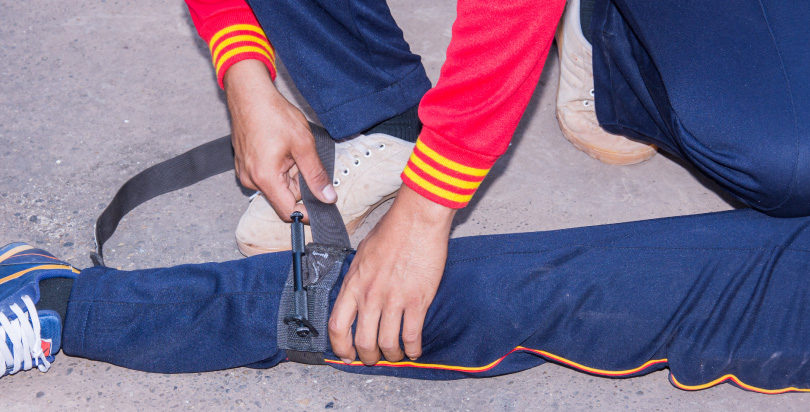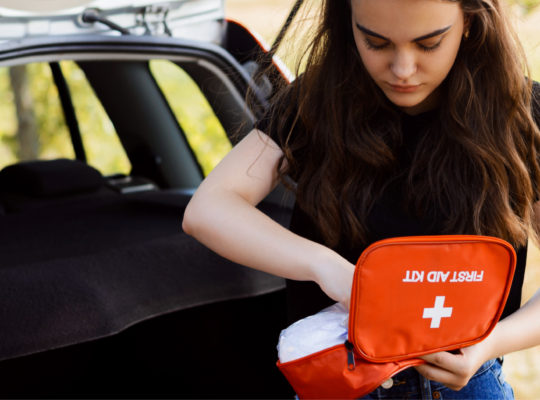What Is a Tourniquet?
A tourniquet is a medical device used to apply pressure and is used tied tightly around a limb to stop severe bleeding. Tourniquets are only to be used as a last resort when heavy bleeding cannot be stopped by pressure and gauze.
When to Use a Tourniquet
Accidents that may cause severe bleeding include car crashes or household accidents usually as a result of shattered glass. Severe bleeding can happen when a major artery or vein is punctured, resulting in life-threatening blood loss.
Before you resort to a tourniquet, attempt to stop the bleeding with consistent pressure to the wound with gauze. If the blood soaks through the gauze, apply another layer. Do not remove or replace the gauze as it can hinder the clotting process. If the bleeding persists and doesn’t decrease in severity, a tourniquet is the best option.
How to Apply a Tourniquet
- Gather your supplies. If you do not have a medical/tactical tourniquet available, you can make your own. Use a non-stretchy material, such as a cravat or terry cloth fabric. Make the fabric between 1 and 2 inches wide, folding it lengthwise. Find a cylindrical object to use as a windlass or twist stick to use as a lever. The windlass is essential to applying enough pressure to the injury.
- Evaluate and locate the wound. If possible, apply on bare skin for maximum visibility and effectiveness. Determine where you should apply the tourniquet. Always apply tourniquets between the injury and the heart of the injured individual. Place it above the wound site, two inches (5cm) from the closest wound edge and tie a square knot-like when you tie your shoes without the bow. Do not apply over a joint or on the torso. Tourniquets are only suitable for limbs.
- Tighten the tourniquet: Once you’ve secured the fabric to the limb, place the windlass on the knot you just made and make another knot. Twist the windlass to apply necessary pressure until the bleeding slows or stops. Secure the windlass by tying one or both ends to the injured arm or leg to mitigate bleeding.
- Apply a second tourniquet if necessary. Do not loosen the tourniquet as this can cause blood to flow backwards through the wound or could cause the bleeding to start again.
- Time it: Make note of the time when you applied the tourniquet, so you and emergency responders know how long it has been on.
Keep in mind:
- Tourniquets should not be on longer than 2-3 hours. This can cause damage to muscles or nerves.
- Improper application can render the tourniquet ineffective. Make sure it is tight enough to stop the bleeding.
- Do not use a cord or similar material as it can cut into the skin, causing further damage to the injury and potential nerve damage.
Be prepared for an emergency with a proper tourniquet. Keep one in your car, your home, and in your go-bag. Disposable tourniquets are available as an addition to first aid kits and emergency kits. They’re a great resource and can make treating a bleeding wound easier if they’re readily available. Also, if the tourniquet is disposable, once it is removed there is less worry about spreading germs and disease. Disposable tourniquets come in several different materials including rubber and latex-free fabric.
Your quick thinking can prevent limb-loss or even death. While you usually rely on medical professionals to apply a tourniquet, it’s not always possible. Do your research and brush up on your first aid knowledge just in case.





